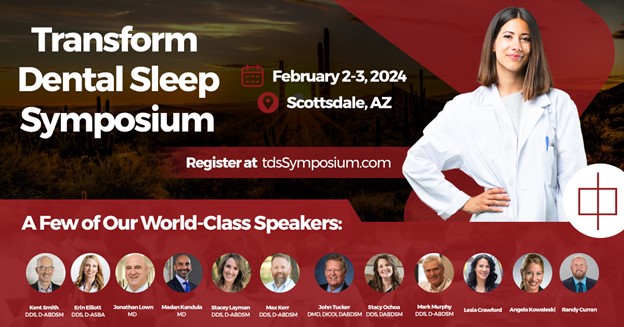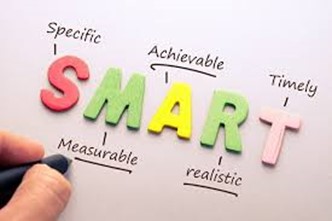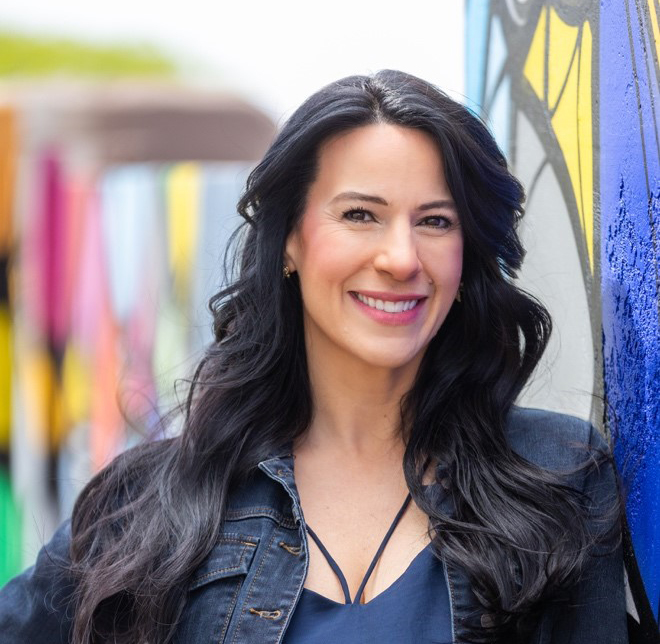
GUEST POST BY LESIA CRAWFORD: HOW TO HAVE A SUCCESSFUL SLEEP CONSULT
A Note from Jason: During her first fifteen years in sleep medicine, Lesia and her partner Dr. Stacey Layman cofounded both GoGo Billing and GoTo Sleep Center for CPAP Alternatives. Lesia serves as CEO and treatment coordinator for the latter’s three Phoenix-area offices where they’ve treated thousands of OSA patients. She’s lectured across the U.S., trained hundreds of practices, and made zillions of people smile with her raucous laughter and infectious energy. Lesia is also an atrociously off-key singer and an out-of-this-world amateur florist. The following post is longer than most I publish. Lesia’s words of wisdom were featured in my book, Transform Dental Sleep, and the feedback was so overwhelmingly positive that I decided to share it verbatim here. If you look at this and think “TLDR”, you are missing out.
— Jason Tierney
 I am the world’s worst dental assistant, but I can sell air—literally. That’s my job. Dental sleep and insurance knowledge are useful. Sales skills definitely help, but the most important trait of a sleep treatment coordinator is a genuine desire to help people understand how better sleep can improve their lives. It’s also important to create a habit of excellence and a build a structured-yet-fluid flow so patients get the attention they deserve, and the dentist stays on schedule. The following is what my typical day as a sleep treatment coordinator goes a somethin’ like this. . ..
I am the world’s worst dental assistant, but I can sell air—literally. That’s my job. Dental sleep and insurance knowledge are useful. Sales skills definitely help, but the most important trait of a sleep treatment coordinator is a genuine desire to help people understand how better sleep can improve their lives. It’s also important to create a habit of excellence and a build a structured-yet-fluid flow so patients get the attention they deserve, and the dentist stays on schedule. The following is what my typical day as a sleep treatment coordinator goes a somethin’ like this. . ..
The office books 30 or 60-minute consultations with me and schedules an hour for scanning so we can begin same-day treatment. Before greeting the patient, I review the diagnostic sleep test and the patient’s responses to our questionnaire, with special attention to their chief complaint. I can make accurate assumptions quickly and set the tone based on that answer alone: “I don’t want to die at night” or “Doctor Emdee recommended it” and, my favorite, “I don’t want a divorce.” There’s also a list of common complaints, e.g., “Difficulty staying asleep” and “Feeling unrefreshed in the morning.”
With a big smile, I introduce myself: “My name is Lesia, and I’m here to get to know you a little bit, review your sleep test and symptoms, connect some dots, explain how the treatment works, help you pick one out, and review your financials and insurance coverage. If this is something you want to do, we’ll head over to the next room and get started with the doctor.”
From there, everything depends on the patient. We might spend the full hour getting into a deep philosophical discussion; laugh so hard we are crying; cry so hard we are laughing; just cut to the chase and get to work; or shake hands and walk them out with a task to follow up later.
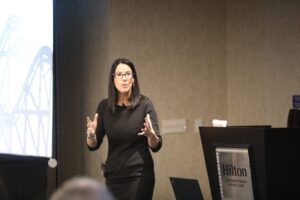 When reviewing the sleep test with a patient, I ask if anyone previously reviewed it with them. Even if the answer is “yes,” typically no one has explained what happens physically when they are sleeping, what apnea does to their body, and how it disrupts their sleep quality—you know, the stuff that matters. Someone may have shown them the dots, but seldom does anyone explain how they’re connected. That’s my job.
When reviewing the sleep test with a patient, I ask if anyone previously reviewed it with them. Even if the answer is “yes,” typically no one has explained what happens physically when they are sleeping, what apnea does to their body, and how it disrupts their sleep quality—you know, the stuff that matters. Someone may have shown them the dots, but seldom does anyone explain how they’re connected. That’s my job.
I use my hands to depict the tongue’s retrusion and obstruction of the airway, describing in simple terms how “the tongue drops back, and you may snore.” Depending on their snoring questionnaire responses, I mention that it may not bother them, but their bed partner will wake up and hit them and make them roll over.
The problem is no laughing matter, but we use humor to make things more palatable e.g., “This is secondhand snoring and domestic abuse. It’s bad enough your sleep is disrupted with your apnea but getting hit certainly does not help.”
Then I describe the pathophysiology of an apneic event. Note that I’m using clinical terms with you, and I use lay terminology when talking with patients. This is no accident. I recommend you adopt this same approach.
“An obstructive apneic event is when the airway is completely shut off,” I say, bringing my hands together to demonstrate a collapse. “Your airway closes completely for 10 seconds or more and the oxygen in your blood drops 3 percent or more. DING DING! This is an apneic event. A hypopnea is like plugging your nose and breathing through a coffee straw for ten seconds, resulting in a 3 percent drop in oxygen – DING! DING! Episodes when your brain doesn’t signal to your lungs to breathe are called “central events.” Looking at your test, you had 56 full closures, 105 “coffee straw” breathing events, and zero centrals, so congratulations, your brain is good.”
Then we usually both laugh.
“Did anyone ever review your results and explain what happens to your body while you’re having an apneic event?” In 98 percent of cases, the answer is “no.” This is when the show starts. They’re usually tired and fighting yawns, and so I amp up the funny.
“When you’re sleeping, your consciousness is disconnected. An elephant could walk into your room and, if it walked quietly, you’d have no idea. While you’re sleeping, your sub-conscious is the boss of your body. Unfortunately, the part of the brain that tells your heart to beat and your lungs to breathe can’t say, “hey, get the tongue out of the airway!”
“Normally, you breathe in oxygen and breathe out carbon dioxide. When your airway is shut off, however, the carbon dioxide goes into your blood where the oxygen should be. Your brain notices the carbon dioxide buildup in your blood and thinks you’re dying. Your fight-or-flight response kicks in, and your body releasing adrenaline and cortisol. The adrenaline goes to your heart, increasing your heart rate and asks the brain, “What’s going on?”
Story time continues. “The brain says ‘We’re dying! Hurry, if there is any oxygen in this body, get it up to me pronto. If I don’t get it, I’ll die, and I’m taking you with me!”
 The heart replies, “I’m on it” and your blood pressure goes up. Your body’s fight-or-flight response can also cause you to clench and grind your teeth, which might help flex the airway open.
The heart replies, “I’m on it” and your blood pressure goes up. Your body’s fight-or-flight response can also cause you to clench and grind your teeth, which might help flex the airway open.
This is when I look closely at oxygen levels. I also look at the patient’s health history and usually connect heartburn, GERD, and acid reflux to prolonged periods of apneic events and lower oxygen levels. “Your airway is like a dam. When the dam is open, the water flows freely, Shut the dam, and the water starts to back up. Your airway is similar. Your lungs are still trying to breathe, but when your airway is closed, pressure builds up and your stomach may get involved.” Call me Thomas Edison because this is when the light bulb turns on for the patients.
Next, we dive deeper into the patient’s symptoms which usually include issues such as waking up several times throughout the night, feeling unrefreshed upon waking, plus memory problems. Again, I’m connecting the dots—explaining how apneic events can cause or exacerbate these symptoms. I equate sleep cycles to a roller coaster: cycling up and down throughout the night from one stage to another.
“REM (rapid eye movement) sleep is when the hormones are being released, the ones that say, ‘I’m happy,’ such as serotonin. Others, including leptin and ghrelin are responsible for managing hunger, while testosterone says, ‘Let’s do it, baby!’”
“Your brain is also organizing information. In short, you get smarter while you sleep. Your brain reviews what you learned throughout the day, keeping what’s important and discarding what isn’t. REM sleep also plays a key role in your cells’ repair processes, and your brain washes out amyloid plaques. Build-up of these plaques can lead to Alzheimer’s, dementia, and Parkinson’s.”
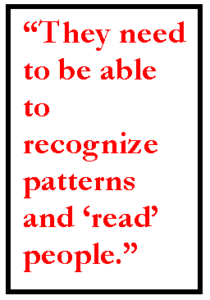 I continue, “Imagine that every time you have an apneic event, whatever stage of sleep you’re in, whatever work is being done stops, and you get pulled into a lighter stage of sleep while the body deals with the apneic event just in case you need to wake up.”
I continue, “Imagine that every time you have an apneic event, whatever stage of sleep you’re in, whatever work is being done stops, and you get pulled into a lighter stage of sleep while the body deals with the apneic event just in case you need to wake up.”
I hold up models of the upper and lower teeth. “This isn’t rocket science. It’s basic physics. When you fall asleep, your lower jaw relaxes and falls backward. Your tongue is attached to the lower jaw, and so it goes with it, cutting off your airway. Meanwhile, your lungs are still trying to breathe. Unfortunately, your airway is being shut off as though you’re being strangled. Our goal, then, is to move the jaw forward slightly. We just need to stabilize it and prevent it from falling back. This forward movement is similar to a modified chin thrust in CPR.”
The number-one response I get from patients is, “Wow, that makes a lot of sense.”
What next? I show them options for appliances. Mindful of regulatory and insurance issues, I describe how each device works and inform the patient of all the options, including discussions of comfort and efficacy, not just insurance coverage. I instruct the patient to select the appliance they want and slide that appliance toward me. I write the name of the device they selected on top of the financial agreement.
Finally, we review the benefits and financials. I pull up a form from my billing team and let the patient know what their insurance will cover and what their out-of-pocket cost is. I use the same financial agreement for all patients and handwrite their information, including deductibles and coinsurance into the relevant fields. Then I turn the page toward them and say, “If you’d like to get started today, go ahead and sign and date the form.”
Sleep treatment coordinators need to be empathetic, entertaining, and charismatic. Their job is to help people by improving their quality of life. Ideally, this person has experience with consultative sales processes and critical thinking skills. They need to be able to recognize patterns and “read” people—body language, tone, and so on—so they can “mirror” them and jibe with their personalities. For employees who possess these traits and experiences, a bit of focused training can take them up a notch or three. Hoping that an existing employee who doesn’t have this mindset will somehow “get it” is a recipe for failure and a formula for firing.
We’re all salespeople, and this is especially true for treatment coordinators, at least those of us who own our role every day. And when the sale involves a person’s health and wellbeing, compassion and caring are essential. This is a crucial position in a dental sleep practice—any practice really—because time spent with an auxiliary employee is time saved for the dentist and other treatment providers.
————————————————————————————————————————–
Lesia will be among esteemed speakers sharing practical tips and techniques during the dedicated Team Track at the Transform Dental Sleep Symposium in Scottsdale, AZ on Feb. 2-3, 2024. From medical billing and physician marketing to case presentation and much more, it’ll all be covered at this dental sleep event of the millennium. Be sure to register you and your team before the meeting sells out. Learn more, get registered, and book your rooms with this link.
Stay informed about Jason’s books, media, & adventures

